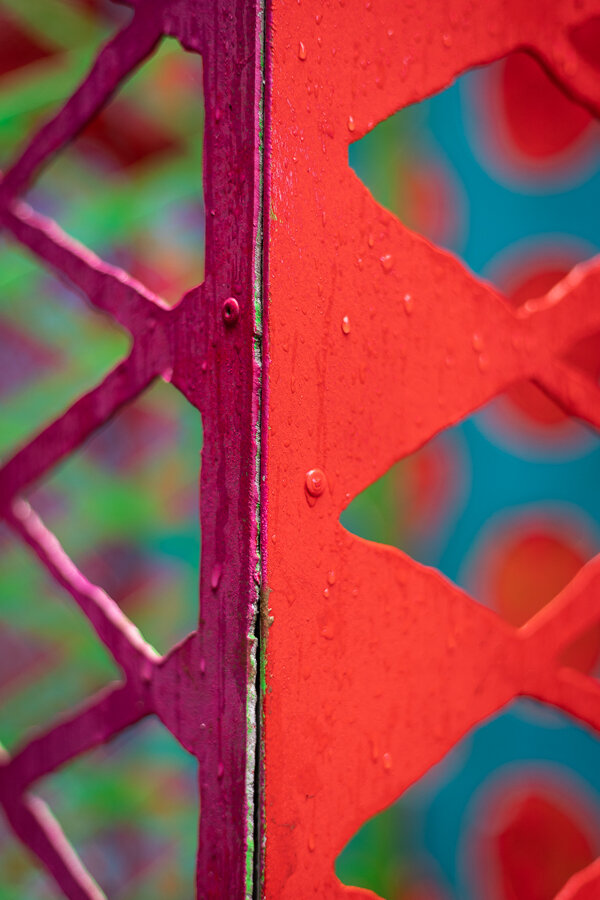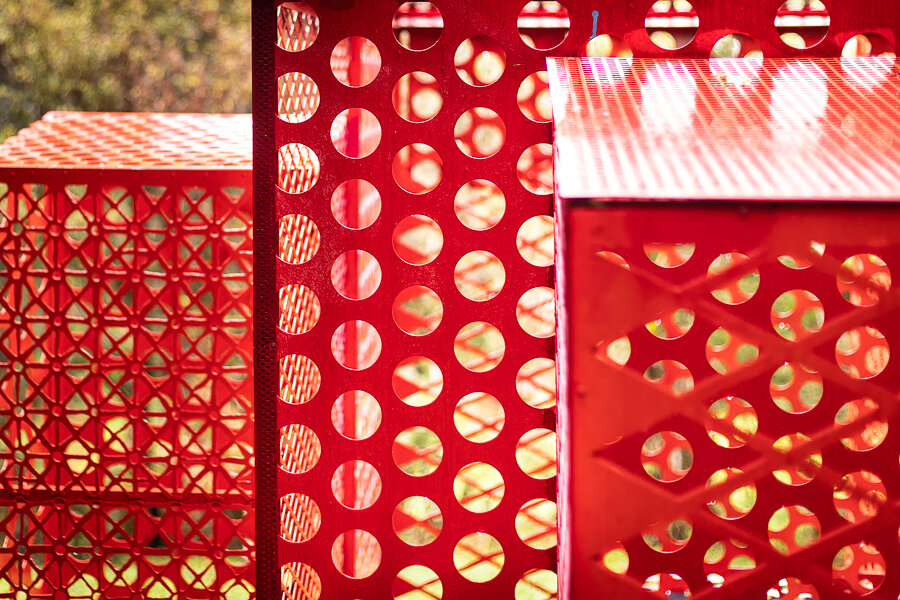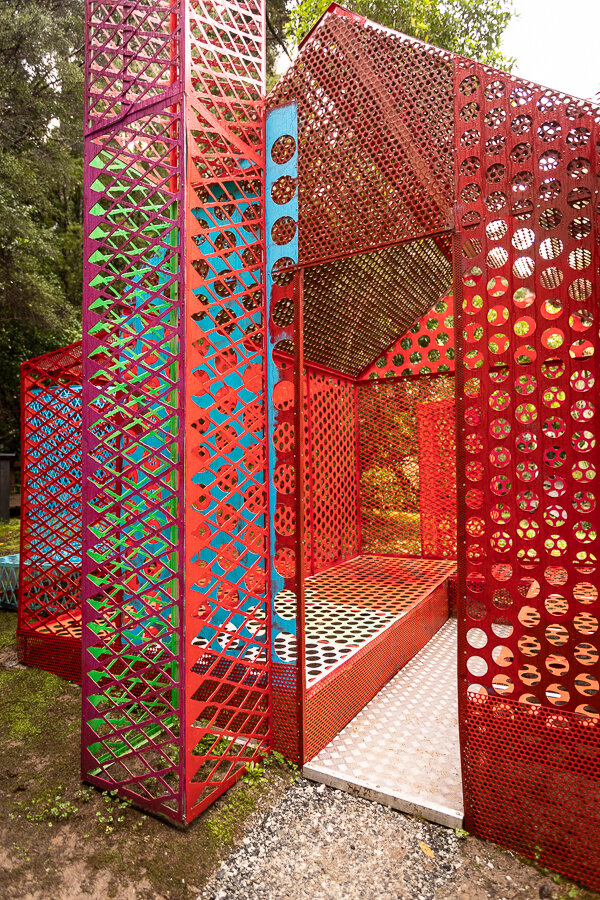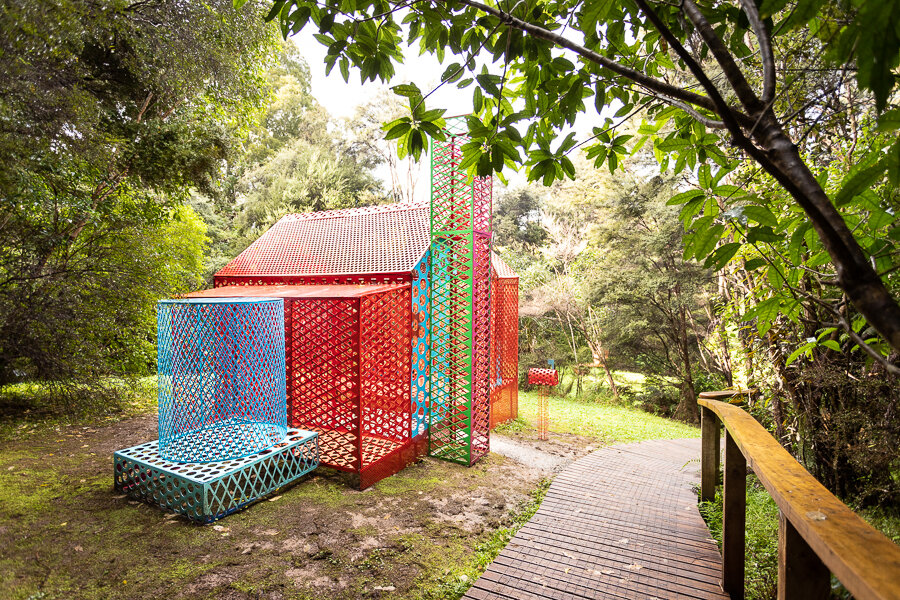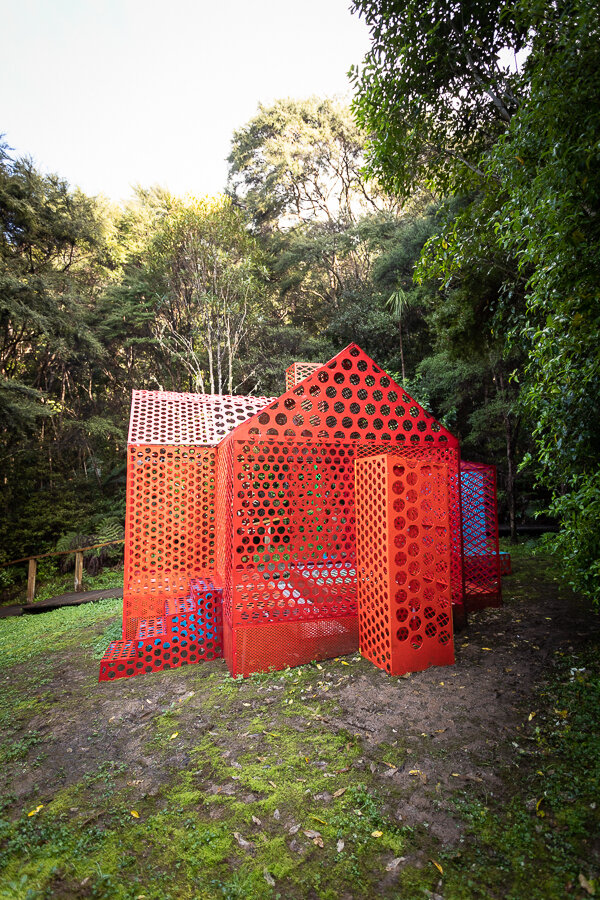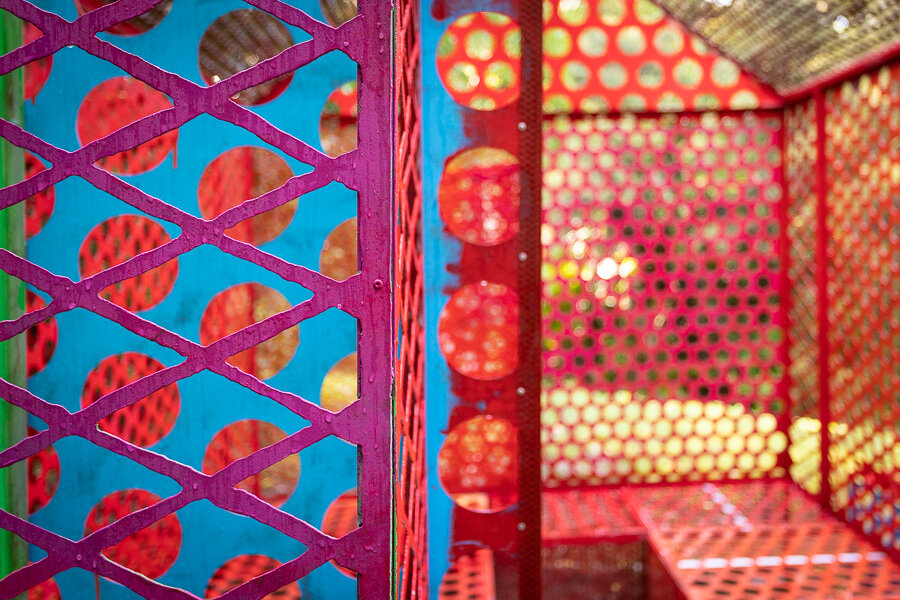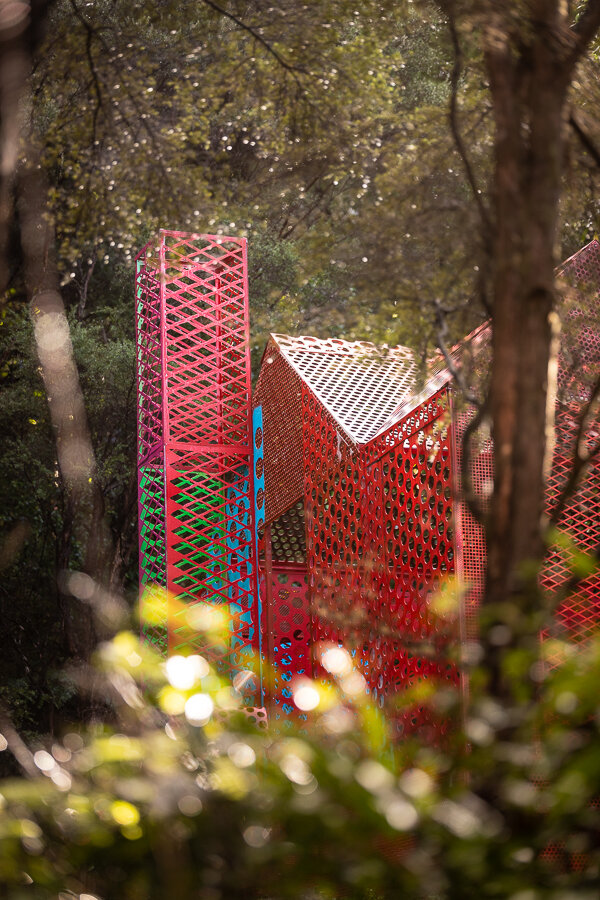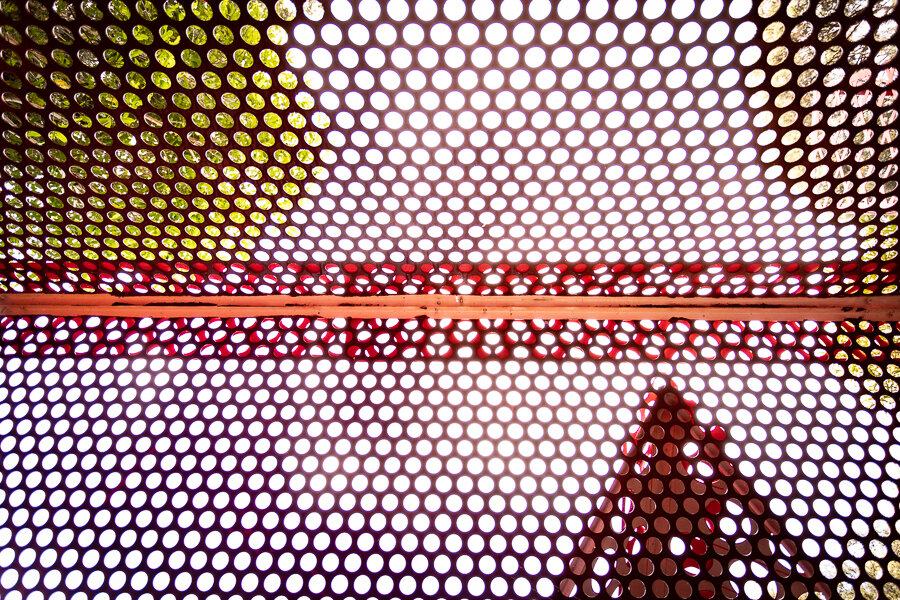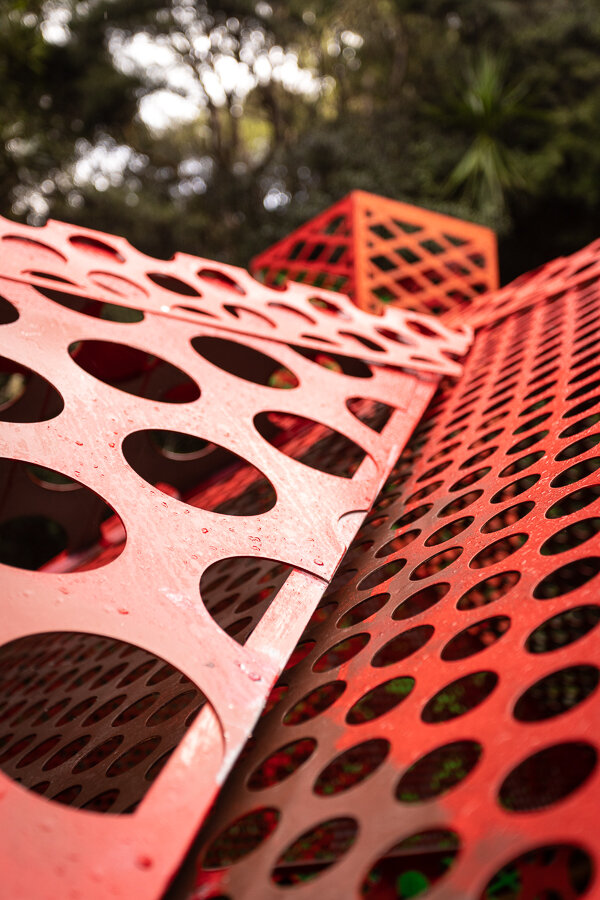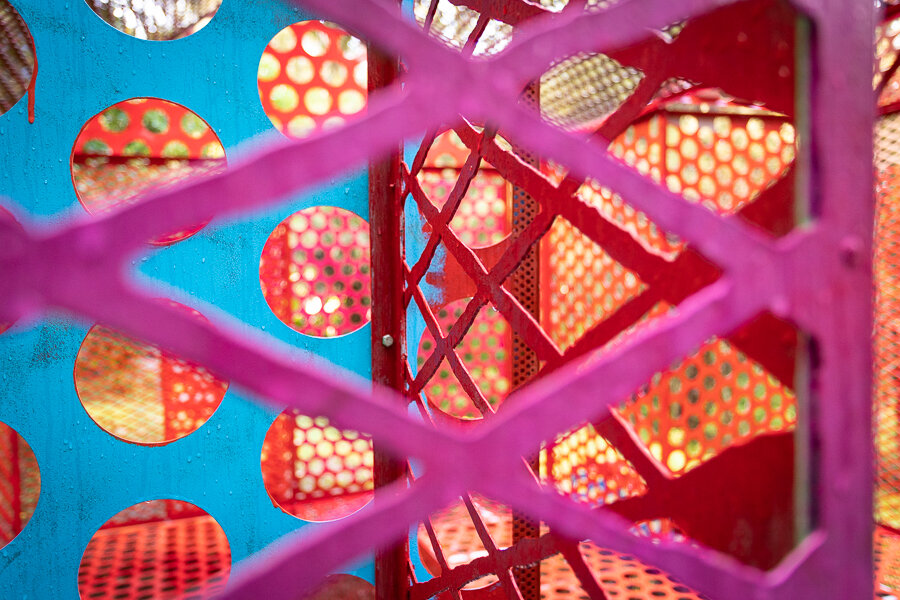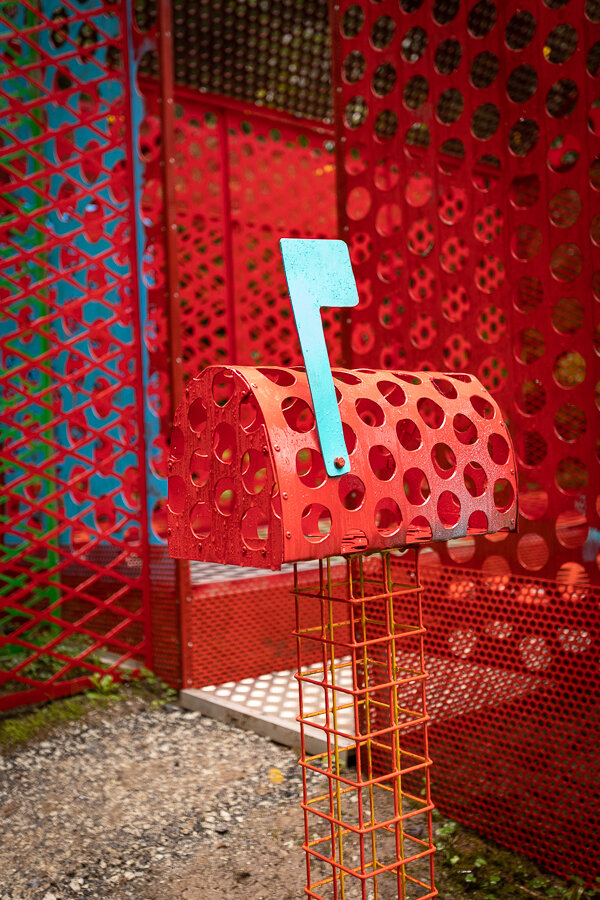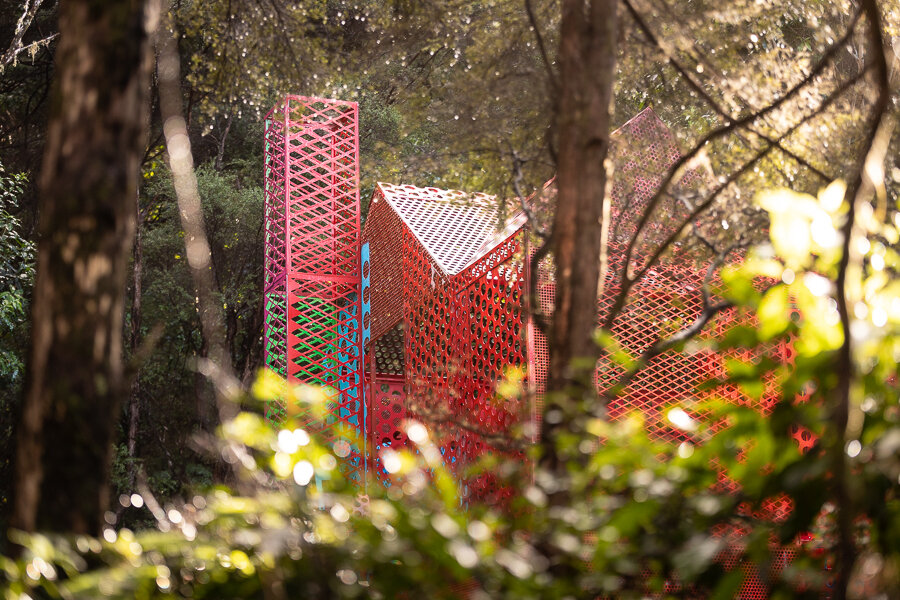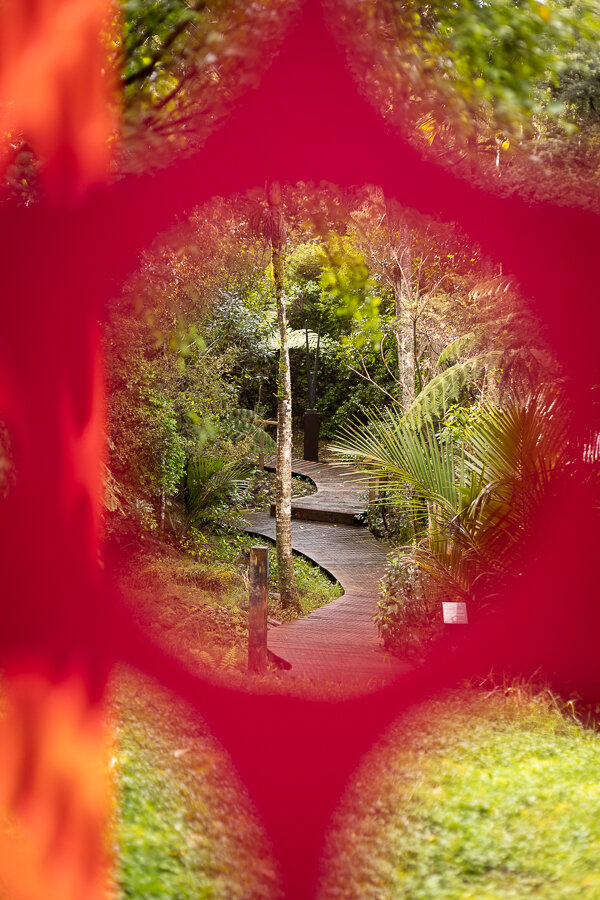In the middle of the sculpture trail is a curious new structure: a site-specific sculptural project by artist Jeff Thomson. Thomson is recognised both in New Zealand and internationally for his experiments with corrugated iron such as the colossal gumboot in Taihape and the corrugated iron Holden station wagon now residing in Te Papa’s collection.
But throughout his career Thomson has also demonstrated an enduring interest in the concept of shelter, exploring the spaces of familiar places such as ‘home.’ In doing so, Thomson has used corrugated iron in stacked layers, flat sided panels and woven strips to build up form. From utilising roofing componentry, he moved to sculpting complete houses as in his Show Homes of 2002 and 2003 to the small Whare of 2011.
With Mesh, this consideration of shelter finds an elegant expression in brightly painted perforated aluminium. Thomson comments: “I like taking away the function of the material…to protect us from the elements, so filling it with holes destroys this.” Visitors are invited to interact with this down-scaled iconic bach, stepping inside its hole-pierced walls with the perforated roof providing only symbolic shelter. There is a playful approach to the removal of the boundaries we are accustomed to between interior and exterior worlds; instead, the outside world travels in and the inside world is glanced upon from the outside perspective. More than a decorative finish, the multiple paint layers are crucial to the vibrancy of the sculpture and have taken months to build up, linking to Thomson’s training at Elam Art School as both a painter and print-maker.
Accompanying the structure, there is also the ubiquitous water tank, previously used by the artist to float curved forms, or to house marine creatures that one views through portholes. Meanwhile the letterbox harks back to Thomson’s earliest projects in the 1980s where he spent time walking long distances and putting hand-written advertisements into rural letterboxes, inviting home-owners to commission him to make sculptures specifically responding to their house or property. There is an interesting notion of returning ‘home’ here in an artistic sense, as it is this rural walking that introduced Thomson to roadside paraphernalia and to the potential of corrugated iron as a workable sculptural material.
Always experimental, Thomson continually searches for diversity in ways of working, noting that he doesn’t feel precious about the process and methods he uses to make art. Describing his workshop as a living museum, his house is situated within the centre of his studio and he enjoys the creative process working with various metals as he cuts and folds, weaves and knits, moulds and stacks, braids and twists, imagining and realising his sculptural dreams.
Other works


